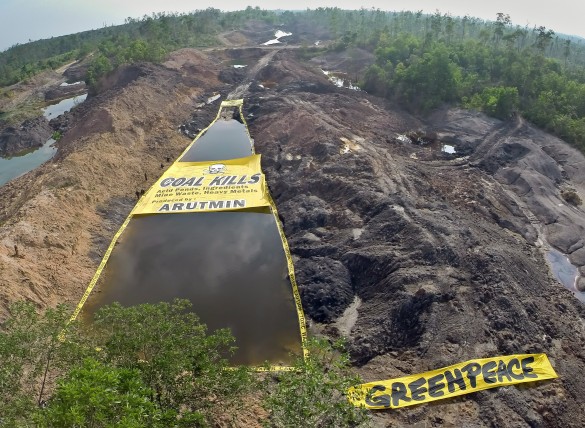Earlier this year, the government announced its plan to develop new and renewable energy sources, which would help electrify Indonesia’s rural areas as part of the Indonesia Terang (Bright Indonesia) initiative. The programme aims to bring electricity to six eastern Indonesia provinces: Maluku, North Maluku, East Nusa Tenggara, West Nusa Tenggara, Papua and West Papua.
The provinces are home to 65 percent of the country’s 12,659 villages that still lack electricity. Until recently, renewable energy was supposed to cover 23 percent of the government’s target of electrifying 10,300 villages by 2019. Unfortunately, since the latest budget cuts to the country’s energy sector, it seems that this may no longer be the case.
While Indonesia Terang is going forward, renewable energy is unlikely to play as large a part in the project as previously planned. The Energy and Mineral Resources Ministry recently announced that it will cut Rp.900 billion (US$68.5 million) from its 2016 budget, with around a third of that taken from the Directorate General for New and Renewable Energy and Energy Conservation.
This means that the department will be left with Rp.1.7 trillion (US$129 million) instead of the Rp.2.3 trillion (US$175 million) it was supposed to receive. As a result, some of the ministry’s projects will be postponed, including the installation of solar panels at airports in Bali, Medan, North Sumatra, Makassar and South Sulawesi, as well as the construction of a new micro-hydro plant in Papua.
Arif Fiyanto, a Greenpeace Indonesia campaigner for climate and energy, says the lack of initiative from the government to invest in renewable energy sources is disconcerting. “The government’s paradigm is still to consider fossil fuels, and coal in particular, as the major source of energy in Indonesia. If the government really wants to electrify the areas of Indonesia that still don’t have access to electricity, it should seriously consider utilizing and maximizing renewable energy sources according to local potency.”
Ironically, last year Indonesia pledged to cut the country’s greenhouse gas emissions by 29 percent by the year 2030, and by 41 percent if it received “support from international cooperation.” It is not clear how the country is now planning to achieve this target.
While other countries are opting to give fossil fuels – such as oil, coal and gas – the flick, Indonesia’s solution to the recent drop in coal exports has been to increase local consumption. To the dismay of environmentalists, the government is planning to build 117 new coal-fired power plants to add 10,000 MW in energy. Fiyanto is one such environmental activist. “The biggest problem in Indonesia’s energy sector is that we are still highly dependent on coal. When the rest of the world is moving away from coal, Indonesia is moving in the opposite direction. If the government continues its addiction to coal, Indonesia will face massive environmental problems from air and water pollution to climate change.”
While around 60 percent of Indonesia’s energy currently comes from coal, Fiyanto says that the data about renewable energy production in Indonesia is conflicting. “Some government officials say that renewable energy contributes around 11 percent to our energy mix. But if we refer to the official data from the Ministry of Energy and Natural Resources, up to the end of 2015, renewable energy only produced around six percent of our total energy supply.”
Many are asking why, unlike many other countries, Indonesia is not moving away from fossil fuels, which are likely to run out in another ten to 13 years. This is particularly the case, as the archipelago is blessed with abundant sources of sustainable energy from solar and hydro to wind. Last year, former Minister of Energy and Mineral Resources, Sudirman Said, claimed Indonesia’s potential for renewable energy is huge, amounting to 112 GW of solar energy, 28.8 MW of geothermal energy, 75 GW of hydro energy, 950 MW of wind energy, and 60 GW of biofuel and biomass energy.
“As a tropical country, Indonesia has huge potential to produce solar energy all year round,” Fiyanto says. “In addition, wind is available in the eastern part of Indonesia and on the southern coast of Java. Also, Indonesia has 40 percent of the world’s geothermal reserve.”
Indonesia’s current disregard for clean energy stands not just in opposition the country’s commitment to tackling climate change, but is not sustainable in the long run.
Coal-fired plants are a short-term solution. While moving to renewable energy would require reforms and huge investment, it is the only practical way to secure the country’s energy, develop its economy and address troubling environmental issues.
While conventional renewable energy sources are abundant in Indonesia, one village is taking things to the next level. With the support of the Indonesian government’s technology agency, Kalisari in Java (which is home to around 150 tofu producers) has taken the unconventional approach of producing gas from waste.
Tofu production requires huge amounts of water – around 33 litres to make one kilogram of bean curd. Acetic acid has to be added to the mix to clump the tofu together. Traditionally, residual water has been dumped into drainage systems, eventually making its way into nearby rivers.
Today, the wastewater is used to produce biogas, which is then piped into homes to power stoves. Instead of being discarded, the water is stored in tanks where it is converted into biogas after a certain type of bacteria is added to the mix. It is the hope that one day, biogas might also be used to power Kalisari’s electricity.
It is not just the environment that is the winner in this equation. The biogas is three times cheaper than refillable LPG tanks. It is also more reliable, as LPG tanks are not always delivered on time, often leaving villagers without gas for weeks at a time.
While this small-scale project will not solve Indonesia’s energy crisis at large, it is a creative step that might just inspire other similar ventures. The government’s technology agency has highlighted that if the initiative was expanded across the country, it could be used as a substitute for 56,000 tonnes of fossil fuels.




